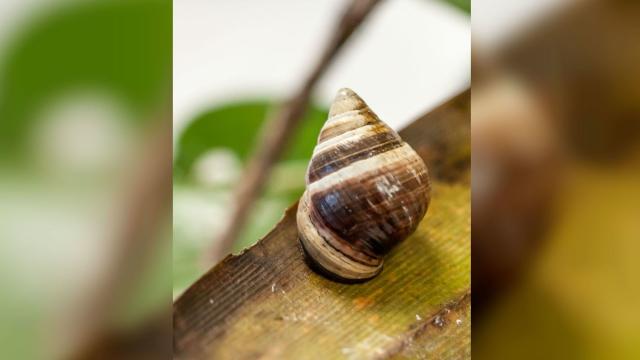Researchers this week bid farewell to a beloved land snail that was the last known survivor of his species Achatinella apexfulva.
The Hawaii Department of Land and Natural Resources (DLNR) wrote in a touching Lonesome George — another lone survivor of its species that has become an icon of conservation efforts. George was one of 10 of the snails brought to a lab at the University of Hawaii in 1997 but was the only one that survived:
George matured in a cage by himself, and although we called him a “he”, the snail was a hermaphrodite, having both male and female parts. Unfortunately, Achatinella apexfulva seem to have been an obligate outcrossing species, meaning that it needed a partner to reproduce.
During his life, George was often in the limelight, an ambassador for the plight of the Hawaiian land snails. He was featured in many newspaper, magazine and online articles, and hundreds of school children and visitors to the lab eagerly viewed him, the last of his kind.
New Scientist reported in 2016 that it is partly humans who are responsible for the demise of Achatinella apexfulva, which were coveted by collectors for their stunning shells—they were frequently used for lei adornments — though climate change, invasive species, and loss of habitat are reportedly also factors.
Per a press release on George’s death, the Achatinella apexfulva was the first of 750 land snail species to be described on the Hawaiian Islands. But Honolulu Magazine reported in 2017 that a mere 200 known species remained, many of which face imminent extinction. Sischo told the magazine that researchers believe “most of the larger snails will be extinct in five to 10 years — that’s how dire it is.”
“They’re going extinct right now, right in front of our eyes,” Sischo said. That was well over a year ago.
While George’s death is a sobering reminder of the sweeping effects of climate change and human interference on biodiversity, the DLNR said that there’s hope for George’s species yet. The department said that a tiny snippet of George’s foot was preserved in 2017 at San Diego’s Frozen Zoo, a massive tissue bank for genetic conservation.
“While it is currently not possible to clone a snail, it certainly will be some day,” the DLNR wrote on Facebook. “George may yet live again!”
[Facebook]
